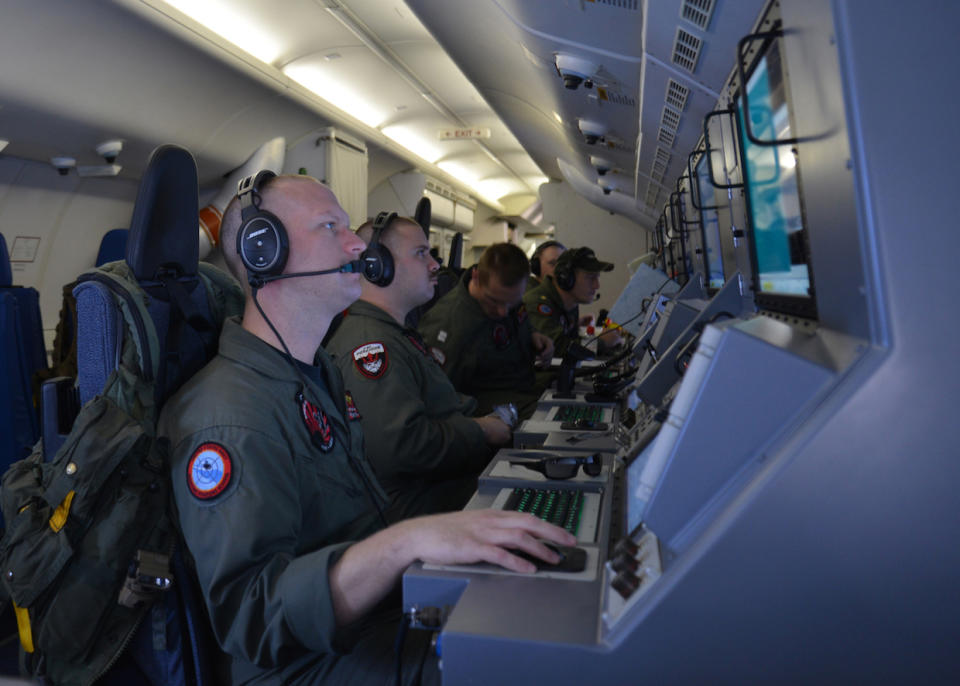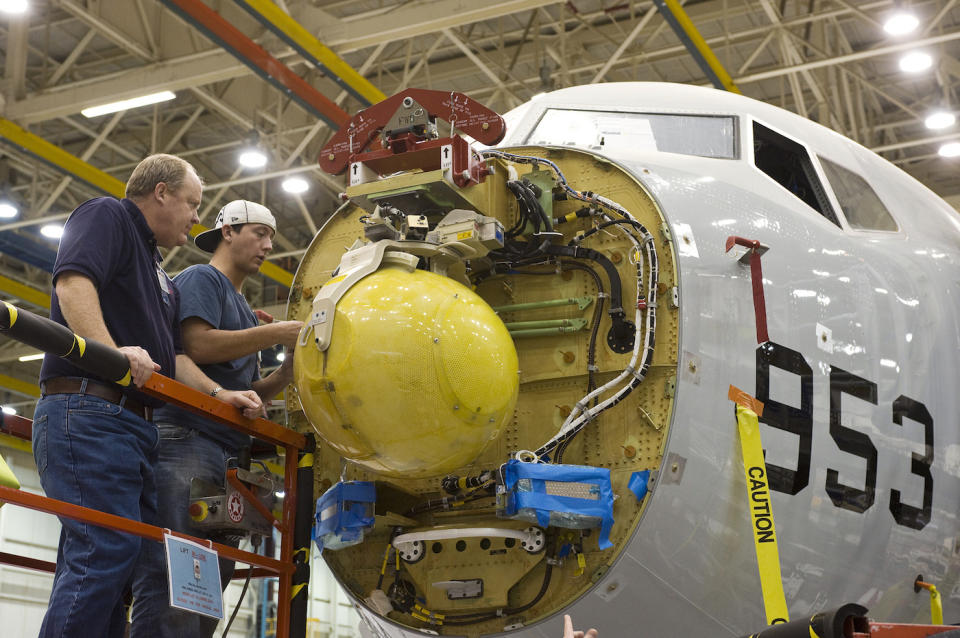The US Navy's best sub-hunting aircraft is facing some nagging problems
The Boeing-made P-8A Poseidon is one of the most advanced maritime patrol aircraft in service.
Its high-tech surveillance gear has made it a mainstay of the Navy's air fleet and drawn the interest of allied forces around the world.
But some nagging problems are affecting the Navy's P-8As, according to a recent Pentagon report.
Introduced in 2013 to replace the P-3 Orion, the P-8A Poseidon as quickly become one of the most highly regarded maritime patrol aircraft in service, fielded by the Navy and sought after by partner countries all over the world.
But the P-8A is dealing with some lingering issues that could affect the force as a whole, according to the fiscal year 2018 annual report produced by the Pentagon's Office of the Director of Operational Test & Evaluation.
The Poseidon can now count among its capabilities receiver air refuelling, employment of the AGM-84D Harpoon Block I anti-ship missile, and several upgrades to its communications systems.
But, the report says, "despite significant efforts to improve P-8A intelligence, surveillance, and reconnaissance (ISR) sensors, overall P-8A ISR mission capabilities remain limited by sensor performance shortfalls."
Moreover, the report finds, data from the operational testing and evaluation of the P-8A's latest software engineering upgrade as well as metrics from the Navy "show consistently negative trends in fleet-wide aircraft operational availability due to a shortage of spare parts and increased maintenance requirements."
Forward-deployed P-8A units have reported "relatively high mission capable rates" when they have access to enough spare parts, sufficient logistics supply support, and priority maintenance.
However, the report states, focusing on supporting forward-deployed units "frequently reduces aircraft availability and increases part cannibalization rates at other fleet operating locations."
Shortages in spare parts for the Poseidon are exacerbated by the nature of the contracting and delivery system for the P-8A, according to the report.
The use of engineering model predictions rather than reliability data from the fleet itself, "ensures that some mission critical spare part contracts lag actual fleet needs," lengthening the already long six- to nine-month contracting process.
These delays are exacerbated by consumable-item processes at the Defence Logistics Agency, which requires depleting stocks and backorders before starting to procure new items, according to the report.
"These delays are a major contributing factor to the observed increases in aircraft downtime awaiting parts and higher part cannibalization," it adds, noting that the P-8A program is working with Naval Supply Systems Command to procure parts on a more flexible and proactive basis and to start basing procurement on fleet-reliability data.
Keeping an eye on things
More than 60 P-8As are in service for the US Navy. The plane is based on Boeing's 737 airliner but built to withstand more stress and outfitted with a suite of electronic gear to allow it to detect and track ships and subs - even just their periscopes - across wide swaths of ocean as well as to conduct surveillance of ports and coastlines.
"I went up on a training flight, and basically ... they could read the insignia on a sailor's hat from thousands of feet above," Michael Fabey, author of the 2017 book "Crashback," about China-US tensions in the Pacific, told Business Insider in early 2018. "It's not the aircraft itself of course," he added, but "all the goodies they put in there."
The Navy plans to improve the aircraft's capability going forward by adding the Advanced Airborne Sensor radar and by integrating the AGM-84 Harpoon Block II+ missile and the High Altitude Anti-Submarine Warfare Weapon Capability MK 54 torpedo.
Interest in the P-8A continues to grow.
India has bought 12 of the P-8I variant, and the country's navy chief has said it's looking to buy more. Australia is buying eight and has an option for four more.
Other countries in the Asia-Pacific region are looking to buy, including South Korea, to which the US State Department approved for the sale of six in 2018.
NATO countries are also looking to reinvigorate their airborne anti-submarine-warfare capabilities, including the UK and Norway, whose are adjacent to the Greenland-Iceland-UK Gap, a chokepoint for submarines travelling between the Atlantic and the Arctic, where Russia's Northern Fleet and nuclear forces are based. The US recently sent P-8As back to Keflavik airbase in Iceland, though it does not plan to reestablish a permanent presence.
At the end of January, Boeing was awarded a $US2.46 billion modification to an existing contract for the production and delivery of 19 P-8A Poseidons - 10 for the US Navy, four for the UK, and five for Norway.

 Yahoo Finance
Yahoo Finance 





